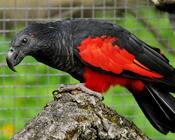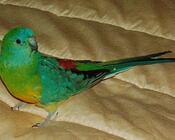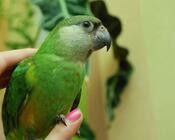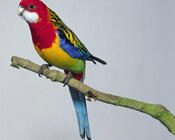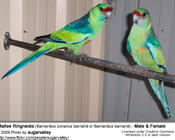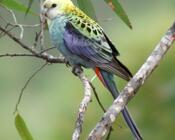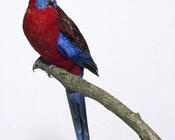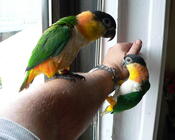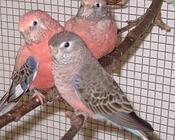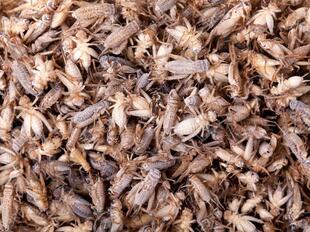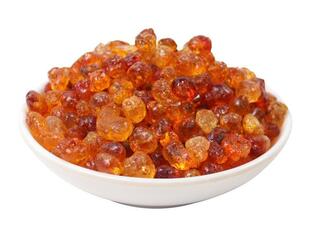Appearance
Living species range in size from the Buff-faced pygmy parrot, at under 10 g (0.4 oz) in weight and 8 cm (3.1 in) in length to the Hyacinth macaw, at 1 m (3.3 ft) in length, and the Kakapo, at 4.0 kg (8.8 lb) in weight.
The most obvious physical characteristic is the strong, curved, broad bill. The upper mandible is prominent, curves downward, and comes to a point. It is not fused to the skull, which allows it to move independently, and contributes to the tremendous biting pressure the birds are able to exert.
Seed-eating parrots have a strong tongue, which helps to manipulate seeds or position nuts in the bill so that the mandibles can apply an appropriate cracking force. The head is large, with eyes positioned high and laterally in the skull, so the visual field of parrots is unlike any other birds. Without turning its head, a parrot can see from just below its bill tip, all above its head, and quite far behind its head. Parrots also have quite a wide frontal binocular field for a bird, although this is nowhere near as large as primate binocular visual fields.
Parrots have strong zygodactyl feet (two toes facing forward and two back) with sharp, elongated claws, which are used for climbing and swinging. Most species are capable of using their feet to manipulate food and other objects with a high degree of dexterity, in a similar manner to a human using their hands. A study conducted with Australian parrots has demonstrated that they exhibit "handedness", a distinct preference with regards to the foot used to pick up food, with adult parrots being almost exclusively "left-footed" or "right-footed", and with the prevalence of each preference within the population varying by species.
Cockatoo species have a mobile crest of feathers on the top of their heads, which they can raise for display, and retract.
The predominant color of plumage in parrots is green, though most species have some red or another color in small quantities. Cockatoos, however, are predominately black or white with some red, pink, or yellow. Strong sexual dimorphism in plumage is not typical among parrots, with some notable exceptions. However, it has been shown that some parrot species exhibit sexually dimorphic plumage in the ultraviolet spectrum, normally invisible to humans.
Distribution
Parrots are found on all tropical and subtropical continents and regions including Australia and Oceania, South Asia, Southeast Asia, Central America, South America, and Africa. Some Caribbean and Pacific islands are home to endemic species.By far the greatest number of parrot species come from Australasia and South America.
Diet
The diet of parrots consists of seeds, fruit, nectar, pollen, buds, and sometimes arthropods and other animal prey. The most important of these for most true parrots and cockatoos are seeds; the large and powerful bill has evolved to open and consume tough seeds.
Behavior
In the wild, parrots live in flocks and can fly many miles each day. They spend hours foraging for a variety of natural foods, socializing, communicating, bathing, preening, establishing nesting territories, mating, excavating nests, and raising their young.
Reproduction
With few exceptions, parrots are monogamous breeders who nest in cavities and hold no territories other than their nesting sites. The pair bonds of the parrots and cockatoos are strong and a pair remains close during the nonbreeding season, even if they join larger flocks. As with many birds, pair bond formation is preceded by courtship displays; these are relatively simple in the case of cockatoos. Allopreening is used by the pair to help maintain the bond.
The eggs of parrots are white. In most species, the female undertakes all the incubation. The female remains in the nest for almost all of the incubation period and is fed both by the male and during short breaks. Incubation varies from 17 to 35 days, with larger species having longer incubation periods. The newly born young are altricial, either lacking feathers or with sparse white down. The young spend three weeks to four months in the nest, depending on species, and may receive parental care for several months thereafter.
In captivity
Parrots are special among pet birds because many species have the potential to be with you for your entire life. They also often outlive their owners. Parrots usually live longer in captivity than in the wild because they are less likely to encounter predators and disease while living in a home. That, however, doesn't mean they are exempt from illness and shortened lifespans. As a general rule, the larger the bird, the longer the expected lifespan is.
Parrots can be very rewarding pets to the right owners, due to their intelligence and desire to interact with people. Many parrots are very affectionate, even cuddly with trusted people, and require a lot of attention from their owners constantly. Some species have a tendency to bond to one or two people, and dislike strangers, unless they are regularly and consistently handled by different people. Properly socialized parrots can be friendly, outgoing and confident companions.
Most pet parrots take readily to trick training. Trick training can also help to redirect a bird's energy and prevent or correct many behavior problems. Some owners successfully use well behaved parrots as therapy animals. Some owners have trained their parrots to wear parrot harnesses (most easily accomplished with young birds) so that they can be taken to enjoy themselves outdoors in a relatively safe manner without the risk of flying away. Parrots are prey animals and even the tamest pet may fly off if spooked.
Although parrots can be messy pets—often throwing food and damaging furniture with their beaks if they can—most parrots may be potty trained to some extent and are generally odorless; however, certain species of amazona and pionus have a distinctive odor most owners find pleasant. Most parrot species, with some notable exceptions, are relatively good pets for most pet allergy sufferers. However, all the species of white cockatoos produce large quantities of dust from their powder down feathers, which may be problematic for people with allergies. Cockatiels, Rose-breasted cockatoos, and Greys also produce smaller amounts of feather dust.
 Russian
Russian
 English
English




















